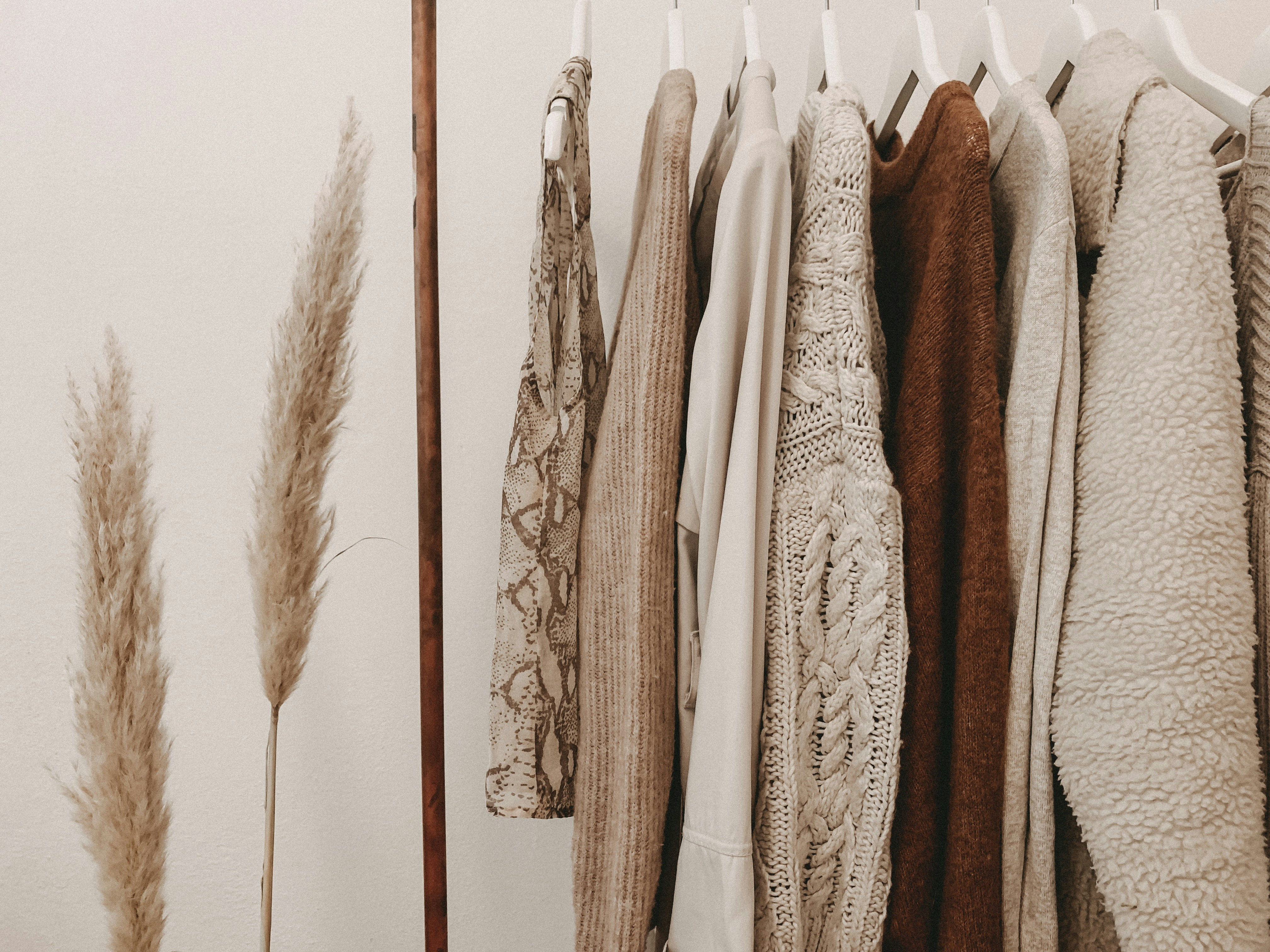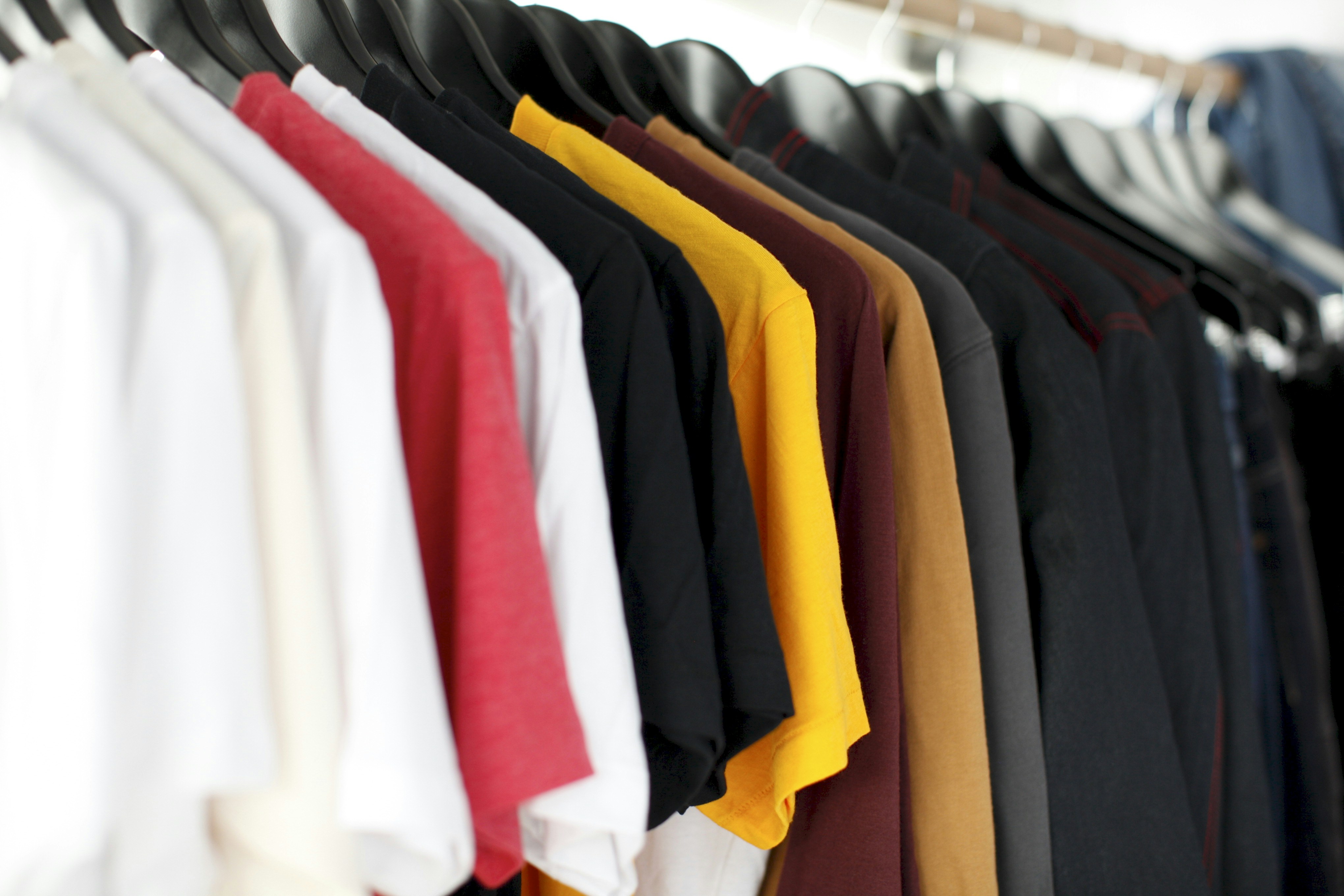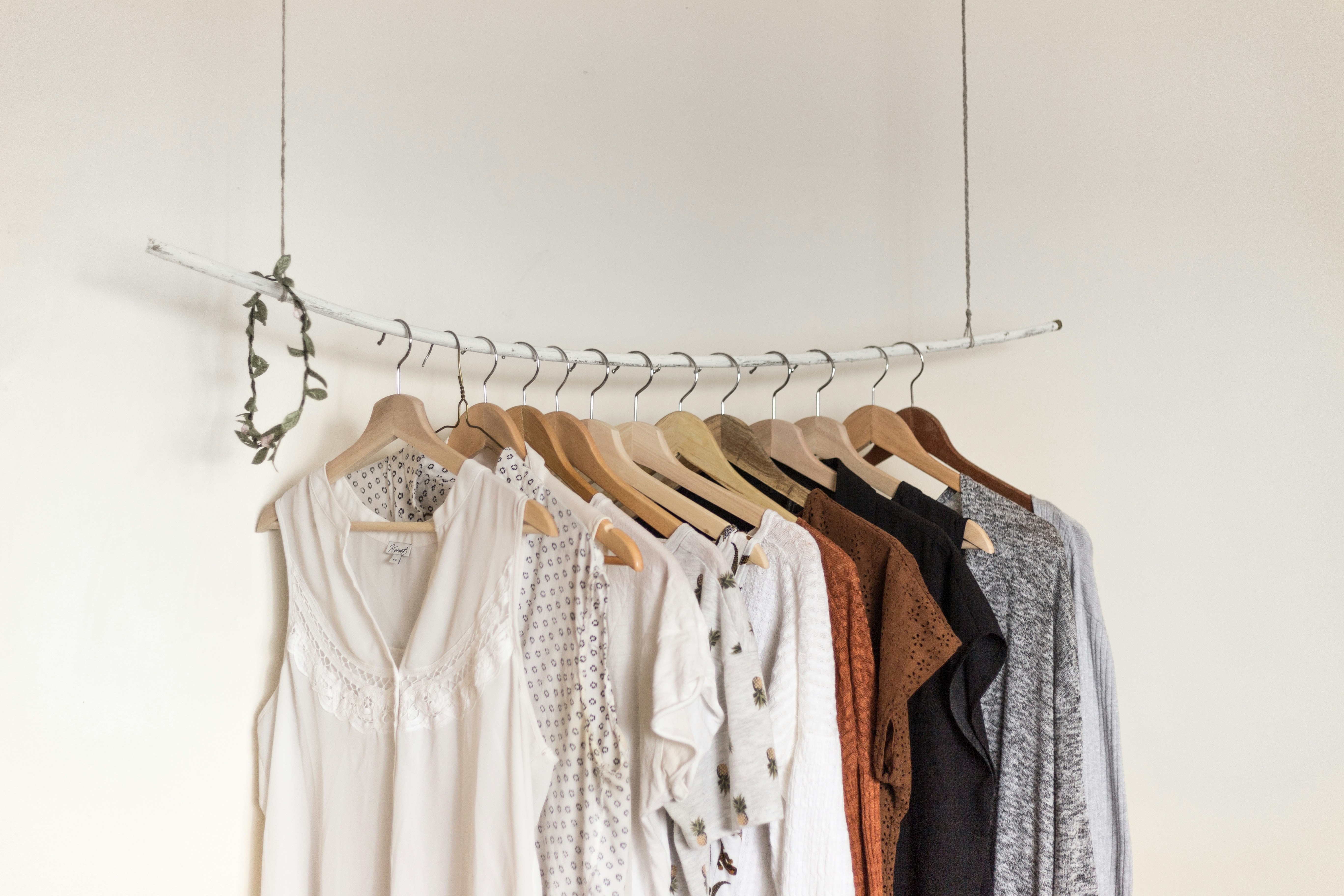Sustainable Fashion Brands: Leaders in Ethical Style
Malik Mohsin Saleem Khan
July 10, 2023 · 15 min read

Introduction
The fashion industry stands at a critical crossroads, with increasing awareness of its environmental and social impact driving a significant shift toward sustainability. As one of the world's most resource-intensive industries—responsible for approximately 10% of global carbon emissions and 20% of global wastewater—fashion faces unprecedented pressure to transform. Leading this transformation are innovative sustainable fashion brands that are redefining what it means to create stylish, desirable clothing while minimizing harm to people and planet.
This comprehensive guide explores the pioneers at the forefront of ethical fashion, examining their innovative approaches to materials, production processes, labor practices, and business models. By highlighting these leaders in sustainable style, we aim to provide both inspiration and practical guidance for conscious consumers seeking to align their wardrobes with their values without compromising on aesthetics or quality.
The Evolution of Sustainable Fashion
The concept of sustainable fashion has undergone a remarkable evolution over the past few decades. What began as a fringe movement characterized by hemp fabrics and shapeless silhouettes has transformed into a sophisticated sector that rivals conventional fashion in both design innovation and market presence. This transformation reflects broader shifts in consumer consciousness and industry recognition of sustainability as both an ethical imperative and business opportunity.
The early pioneers of sustainable fashion emerged in the 1990s and early 2000s, with brands like Patagonia and Stella McCartney challenging industry norms by prioritizing environmental considerations alongside aesthetic ones. These early adopters faced significant challenges, from limited access to sustainable materials to consumer skepticism about eco-friendly fashion's style credentials. According to a 2018 report by Business of Fashion, sustainable fashion was long perceived as a "sacrifice of style for ethics"—a perception that has dramatically shifted in recent years.
Today's sustainable fashion landscape is characterized by remarkable diversity and innovation. The global ethical fashion market was valued at $6.35 billion in 2019 and is projected to reach $15.17 billion by 2030, according to Allied Market Research. This growth is driven by increasing consumer demand for transparency and responsibility, with a 2021 McKinsey survey finding that 67% of consumers consider the use of sustainable materials an important purchasing factor. The COVID-19 pandemic has further accelerated this trend, prompting deeper reflection on consumption patterns and supply chain vulnerabilities.
Materials Innovation: Reimagining Fashion's Foundation
At the heart of sustainable fashion lies a fundamental reimagining of the materials used to create clothing. Conventional fashion relies heavily on environmentally problematic materials—conventional cotton requires enormous water inputs and pesticide use, while synthetic fabrics like polyester are derived from petroleum and shed microplastics throughout their lifecycle. Leading sustainable brands are pioneering alternatives that dramatically reduce these impacts.
Organic and regenerative natural fibers represent one significant avenue of innovation. Brands like Patagonia and Eileen Fisher have made substantial commitments to organic cotton, which eliminates synthetic pesticides and fertilizers while reducing water consumption by up to 88% compared to conventional cotton. Taking this approach further, regenerative agriculture practices actively restore soil health and sequester carbon. Outdoor brand Patagonia has been particularly influential in this space, developing the Regenerative Organic Certified standard that addresses soil health, animal welfare, and farmer prosperity.
Perhaps even more revolutionary is the development of next-generation materials derived from agricultural waste, laboratory processes, and unexpected natural sources. These innovations offer the potential to dramatically reduce fashion's environmental footprint while creating unique performance and aesthetic properties:
- Piñatex, developed by Ananas Anam, transforms pineapple leaf fiber—an agricultural byproduct—into a leather alternative used by brands like Hugo Boss and H&M
- Mylo™, created by Bolt Threads, is a mycelium-based leather alternative grown from mushroom roots that has been adopted by Stella McCartney and Adidas
- ECONYL®, a regenerated nylon made from fishing nets and other nylon waste, has been embraced by swimwear brands like Reformation and luxury players including Prada
"The future of fashion lies in materials that never compromise between sustainability, performance, and aesthetics. We're finally reaching the point where we don't have to choose." — Stella McCartney
Recycled and upcycled materials represent another crucial innovation area. Brands like Reformation and Nudie Jeans have built their identities around transforming existing textiles into new garments, dramatically reducing resource inputs. Reformation claims that its recycled collections use 15% of the water and 10% of the carbon compared to conventional approaches. Meanwhile, Nudie Jeans offers free repairs for life and has established an extensive second-hand program, exemplifying the circular economy principles increasingly central to sustainable fashion.
Ethical Production: Prioritizing People and Processes
Truly sustainable fashion extends beyond environmental considerations to encompass the human dimension of clothing production. The fashion industry employs approximately 75 million people worldwide, many in developing countries where labor protections may be limited. Sustainable fashion brands are distinguished by their commitment to ethical production practices that ensure worker wellbeing throughout the supply chain.
Transparency forms the foundation of ethical production. Brands like Everlane pioneered "radical transparency," publishing detailed information about their factories, costs, and pricing. This approach has been taken further by companies like Asket, which provides a "full traceability" breakdown for each garment, detailing every production stage from raw material to finished product. According to the Fashion Transparency Index, overall industry transparency has increased by 12 percentage points since 2017, though the average score remains just 23% out of a possible 100%.
Fair labor practices represent another critical dimension of ethical production. Certification systems like Fair Trade and SA8000 provide frameworks for ensuring safe working conditions, fair compensation, and workers' rights. Pioneering brands in this space include:
- Nisolo, which ensures that 100% of workers in their supply chain receive a living wage
- Kotn, which works directly with cotton farming communities in Egypt, providing fair prices and investing in local education
- Outerknown, founded by professional surfer Kelly Slater, which was the first brand to receive Fair Labor Association accreditation before producing a single garment
Local and small-batch production represents a growing trend within sustainable fashion, with brands like Elizabeth Suzann (before its closure) and Christy Dawn emphasizing domestic manufacturing and made-to-order models that eliminate overproduction. This approach not only supports local economies and craftsmanship but also reduces the carbon footprint associated with global shipping while allowing for greater quality control and working condition oversight.
Innovative production technologies are also transforming sustainable fashion manufacturing. Digital printing reduces water usage by up to 95% compared to traditional methods, while 3D knitting eliminates cutting waste by creating garments as a single piece. Brands like Ministry of Supply have pioneered these approaches, combining sustainability with performance and customization potential.
Innovative Business Models: Redefining Fashion Consumption
Beyond materials and production practices, truly sustainable fashion brands are reimagining the fundamental business models that have long defined the industry. Fast fashion's model of planned obsolescence, trend-driven consumption, and disposability has created enormous environmental and social costs. Leading sustainable brands are pioneering alternative approaches that decouple growth from resource consumption while meeting consumer needs in novel ways.
The slow fashion philosophy stands in direct opposition to the accelerating pace of trend cycles. Brands like Cuyana, with their motto "fewer, better things," and Veja, which releases designs on its own timeline rather than following seasonal schedules, exemplify this approach. These companies focus on timeless designs, exceptional quality, and emotional durability—creating pieces intended to be worn for years rather than weeks. Research by the Ellen MacArthur Foundation suggests that doubling the average number of times a garment is worn would reduce its environmental impact by 44%.
Circular business models represent perhaps the most transformative innovation in sustainable fashion. These approaches aim to eliminate the concept of waste by keeping products and materials in use through strategies like rental, resale, repair, and recycling:
- Rental services like Rent the Runway and Nuuly allow consumers to access fashion without ownership, significantly reducing the resources required to meet style needs
- Recommerce platforms such as ThredUp and The RealReal have mainstreamed secondhand shopping, with the global secondhand market projected to reach $64 billion by 2024
- Repair programs from brands like Patagonia's Worn Wear and Nudie Jeans' Repair Shops extend product lifespans while building customer loyalty
"The most sustainable garment is the one already in your closet." — Elizabeth Cline, author of "The Conscious Closet"
Direct-to-consumer models have enabled many sustainable brands to build viable businesses while maintaining their values. By eliminating wholesale markups and controlling their own messaging, companies like Reformation and Allbirds can invest more in sustainable materials and ethical production while educating consumers about their practices. This approach also allows for greater supply chain control and the ability to scale impact-driven initiatives.
Consumer Guide: How to Identify and Support Sustainable Brands
Navigating the world of sustainable fashion can be challenging for consumers, particularly as "greenwashing"—misleading claims about environmental benefits—becomes more sophisticated. This practical guide will help you identify genuinely sustainable brands and make informed purchasing decisions that align with your values.
- Look for specific, substantiated claims: Vague terms like "eco-friendly" or "natural" mean little without supporting details. Truly sustainable brands provide specific information about their materials, production processes, and impact. For example, Reformation publishes a quarterly sustainability report with detailed metrics, while Patagonia offers extensive documentation of its supply chain practices.
- Check for credible certifications: Third-party certifications provide valuable verification of sustainability claims. Key certifications to look for include:
- Global Organic Textile Standard (GOTS) for organic natural fibers
- OEKO-TEX Standard 100 for chemical safety
- Bluesign for environmental manufacturing standards
- Fair Trade Certified for ethical labor practices
- B Corporation certification for overall social and environmental performance
- Assess transparency: Sustainable brands typically provide detailed information about their supply chains, manufacturing locations, and environmental impact. Tools like the Fashion Transparency Index and Good On You app can help evaluate brand transparency. Companies like Everlane, Asket, and Nisolo set the standard with comprehensive factory information and impact reporting.
- Evaluate materials: The materials used in garments significantly impact their sustainability. Look for:
- Organic or regeneratively grown natural fibers
- Recycled materials (particularly for synthetics)
- Innovative alternatives to high-impact conventional materials
- Biodegradable or recyclable components
- Consider longevity and versatility: Sustainable fashion isn't just about how a garment is made—it's also about how long it will remain useful. Evaluate construction quality, design timelessness, and versatility across different occasions and seasons. Brands like Eileen Fisher and Veja design for longevity rather than trend cycles.
When building a more sustainable wardrobe, consider adopting a strategic approach that maximizes impact while respecting your budget and style preferences. Start by identifying your most-worn items and prioritize sustainable replacements as these pieces wear out. Explore secondhand options through platforms like ThredUp, Vestiaire Collective, or Depop before buying new. For new purchases, invest in higher-quality items from sustainable brands for wardrobe foundations, while using rental services for trend-driven or occasional pieces.
Remember that perfect sustainability doesn't exist in today's fashion system—every brand and product involves tradeoffs. The goal is to make more informed choices that progressively reduce your fashion footprint while supporting companies driving positive change in the industry.
The Future of Sustainable Fashion
The sustainable fashion landscape continues to evolve rapidly, with several emerging trends poised to reshape the industry in coming years. Understanding these developments offers insight into both the challenges and opportunities ahead for brands and consumers committed to fashion sustainability.
Technology integration represents perhaps the most transformative trend on the horizon. Blockchain applications are enabling unprecedented supply chain transparency, allowing consumers to verify the journey of their garments from raw material to finished product. Companies like Provenance and TextileGenesis are pioneering these solutions, while brands including H&M and Kering are implementing blockchain to authenticate sustainability claims. Meanwhile, artificial intelligence is optimizing resource use throughout the fashion lifecycle—from predictive analytics that reduce overproduction to algorithms that enhance recycling efficiency.
Biodesign and circular materials development continue to accelerate, with innovations that seemed futuristic just years ago now approaching commercial viability. Particularly promising developments include:
- Lab-grown leather alternatives from companies like Modern Meadow
- Algae-based textiles that sequester carbon during production
- Fully biodegradable synthetics that perform like conventional polyester
- Closed-loop recycling systems that can separate and recover fibers from blended fabrics
Policy and regulation are increasingly shaping sustainable fashion's trajectory. The European Union's Circular Economy Action Plan includes specific provisions for textiles, while France has pioneered legislation prohibiting the destruction of unsold fashion items. In the United States, California's Transparency in Supply Chains Act has established precedents for mandatory disclosure of labor practices. These regulatory frameworks are likely to expand, creating both compliance challenges and market opportunities for forward-thinking brands.
Consumer behavior continues to evolve, with younger generations in particular demonstrating stronger preferences for sustainability. According to First Insight, 73% of Gen Z consumers are willing to pay more for sustainable products, compared to 68% of millennials. This shift is driving mainstream adoption of practices once considered niche, from clothing rental to repair services to secondhand shopping.
Conclusion
The rise of sustainable fashion brands represents more than just a market trend—it signals a fundamental reimagining of how clothing can be created, consumed, and valued in a world of finite resources and growing environmental challenges. The leaders profiled in this guide demonstrate that fashion can be both beautiful and responsible, creative and conscious, profitable and principled.
As consumers, our purchasing decisions have tremendous power to accelerate this transformation. By supporting brands that prioritize sustainability, we send a clear market signal that ethical practices matter. Equally important is embracing a more mindful relationship with fashion—buying less but better, caring for garments properly, and finding new life for items we no longer need.
The path to a fully sustainable fashion industry remains long, with significant challenges around scale, accessibility, and systemic change. Yet the innovations and commitments of today's pioneering brands offer genuine hope that fashion can evolve from one of the world's most polluting industries to a force for environmental regeneration and social good. By understanding these leaders in ethical style—their approaches, their values, and their vision—we gain both practical guidance for our own wardrobes and inspiration for broader change.
Frequently Asked Questions
How can I verify a brand's sustainability claims?
Look beyond marketing language to specific, measurable commitments and transparent reporting. Check for credible third-party certifications like B Corp, GOTS, or Bluesign. Research the brand using resources like Good On You, the Fashion Transparency Index, or Remake's brand directory, which evaluate companies based on environmental impact, labor practices, and transparency. Be wary of vague claims without supporting evidence, which may indicate greenwashing.
Are sustainable fashion brands always more expensive?
While sustainable fashion often costs more than fast fashion, the price difference reflects real costs that conventional brands externalize—fair wages, quality materials, and environmental protections. However, the landscape is diverse: direct-to-consumer brands like Everlane and Kotn offer mid-range pricing, while secondhand sustainable brands provide budget-friendly options. When evaluating cost, consider price-per-wear: higher-quality sustainable garments typically last longer, potentially offering better value over time despite higher upfront costs.
What's the most sustainable fabric choice?
There's no single 'most sustainable' fabric, as each material has different environmental impacts across various metrics (water use, carbon emissions, biodegradability, etc.). Generally, organic and recycled fibers have lower impacts than conventional alternatives. For natural fibers, organic linen and hemp typically have the lowest environmental footprints. For synthetics, recycled polyester and nylon significantly reduce petroleum use and emissions. The best choice depends on the garment's purpose, expected lifespan, and how it will be cared for and eventually disposed of.
How can I support sustainable fashion on a limited budget?
Buying secondhand is the most affordable way to build a sustainable wardrobe—explore thrift stores, online resale platforms like ThredUp and Poshmark, or clothing swaps. Focus on quality over quantity, investing in fewer, more durable items. Consider rental services for special occasion wear. Learn basic repair skills to extend the life of your clothes, and care for them properly (washing in cold water, air drying) to reduce their environmental impact and replacement frequency. When buying new, save for key pieces from accessible sustainable brands rather than frequent fast fashion purchases.
What's the difference between ethical and sustainable fashion?
While often used interchangeably, these terms have distinct focuses. Sustainable fashion primarily addresses environmental impact—materials, production processes, and product lifecycle. Ethical fashion centers on human welfare—fair wages, safe working conditions, and workers' rights throughout the supply chain. The most responsible brands address both dimensions, recognizing that social and environmental concerns are interconnected. When evaluating brands, consider their commitments in both areas for a complete picture of their impact.
Malik Mohsin Saleem Khan
Founder
Author bio information


